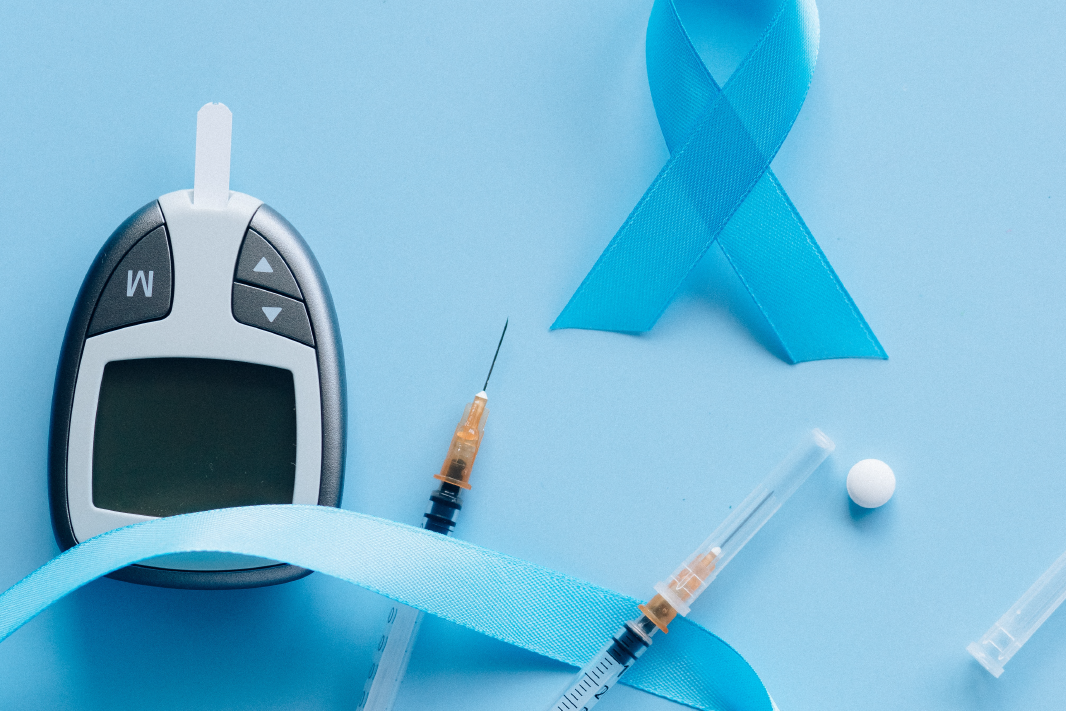Diabetes Awareness Month
Every November, Diabetes Awareness Month is commemorated and every November 14th the World Health Organization (WHO) celebrates Diabetes Day with the intention of educating and making visible the opportunities we have to prevent, diagnose and treat diabetes. This condition can affect anyone, therefore, it is important to know what it is and how it can be prevented or managed.
According to the Centers for Disease Control and Prevention (CDC) and its 2020 report, 10.5% of the US population suffers from diabetes and 21.3% of the population has not yet been diagnosed. Additionally, it is estimated that about 34.5% of the American adult population have prediabetes.

Diabetes: What You Should Know
The American Diabetes Association defines diabetes as a metabolic problem that causes blood glucose (sugar) levels to be higher than normal. In a normal eating process, the body converts food into glucose and sends it to the blood to give us energy. Then, insulin (a hormone produced by the pancreas) helps move glucose into the cells and it is stored for later use. This process can be affected in people with diabetes.
Types of diabetes:
- Type 1 Diabetes: The body produces little or no insulin. It typically occurs in childhood or young people, although it may occur in adults.
- Type 2 Diabetes: The body has resistance to insulin, so it does not use it correctly.
- Gestational Diabetes: develops during pregnancy and tends to stabilize after childbirth. However, you have a higher risk of developing type 2 diabetes in the long term.
Prediabetes
Prediabetes is a classification used by health professionals to identify those people who have a higher than desirable blood glucose level. The Mayo Clinic defines it as those values where it is not high enough to be considered diabetes, but are not low enough to be classified as normal. When a person has prediabetes, if they do not make changes in their lifestyle and diet, they may be more likely to develop type 2 diabetes. Although it is not a diagnosis of diabetes, it is possible that these levels of prediabetes cause some damage in the long term. Some of the damage it can cause is to the heart, cardiovascular system and kidneys.
To stop long-term damage you must:
- Improve nutrition
- Increase physical activity
- Keep a healthy weight
- Routine medical exams
Symptoms
In order to seek medical help in time, it is important that you recognize the signs and symptoms that warn us that we may be having problems with blood glucose:
- Urinating very frequently
- Being constantly thirsty
- Being constantly hungry
- Fatigue or excessive tiredness
- Blurry vision
- Cuts/bruises that do not heal quickly
- Unexplained weight loss
- Tingling, pain, or numbness in the hands and feet
Check with your doctor if you experience any of these symptoms.
Preventive Measures
One of the best news we have received in recent years regarding diabetes is that it can be prevented. So, all we have to do is act immediately and follow these recommendations:
- Motivation: As a starting point, identify what drives you to improve your lifestyle and stay healthy
- Healthy weight: Reducing 5% of your weight can help you reverse prediabetes and prevent diabetes.
- Meal plan: Eat healthy, low-sugar, low-fat foods.
- Physical activity: include in your daily routine activities that allow you to be moving such as exercises, physical tasks, dancing, among others.
Maintaining a healthy lifestyle, having your routine checkups annually and following preventive measures will allow you to enjoy a better quality of life and a better state of health.

